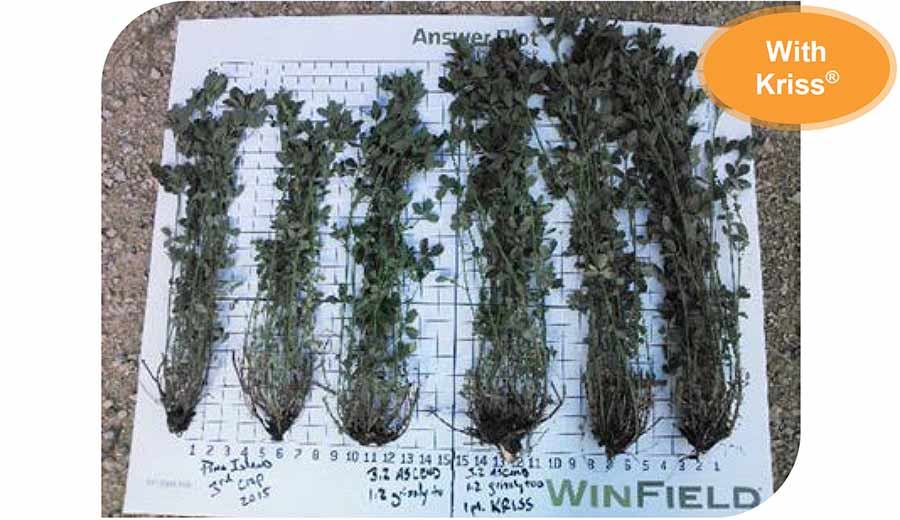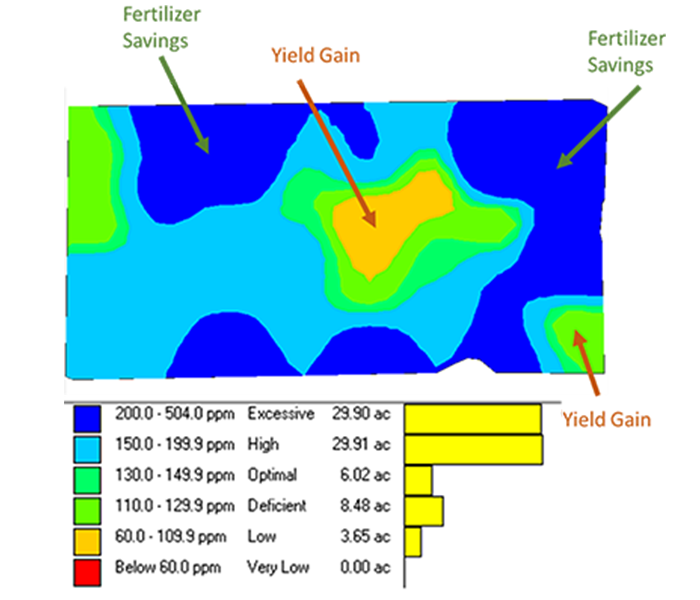Alfalfa - Potato Leafhopper
Leafhopper counts have increased well above economic thresholds.
As the AC units are rolling in full force this week, so is the Potato Leafhoppers development in alfalfa. In a poll across our trade area, leafhopper counts have increased well above the economic threshold.
Why is this a concern?
Heat and drought stress can cause alfalfa to become more susceptible to injury, making it an easy target for leafhopper feeding. The Potato leafhopper has piercing-sucking mouth parts, which allows them to remove sap from plant tissue.
In doing so, the leafhopper saliva contains toxins that can reduce the translocation of carbohydrates throughout the plant. This process creates a “V-Shapped” yellowing of the leaf also known as “Hopperburn”. Leafhopper feeding can cause the alfalfa to become yellow and stunted.
This, in turn, can decrease forage quality as well as reduce yield. Visual signs of hoppers indicate that yield is already starting to be robbed.
What to look for?
Potato Leafhoppers are a small insect, generally around an 1/8-inch long. They have a wedge shape look to them with a bright green to yellowish green color to them.
Out in the field, they can be seen as both nymphs and adults. The younger nymphs tend to be more yellow in color and lack wings. Leafhoppers are quick and flee when disturbed, making it difficult to count without a net.
The Nutrient and Pest Management Program from the University of Wisconsin-Extenstion (UW-Madison) put together a datasheet on scouting, identification, and thresholds for leafhoppers. Get the datasheet here.
How do we Control?
Management of Potato Leafhoppers is heavily dependent on scouting. The Economic Threshold is based on sweep net counts, given the plants height, and considering the crops yield/quality loss.
Insecticide applications are recommended to prevent populations from becoming yield robbing when populations are over threshold. The ideal time to make a chemical application would be around 4-6 inches of growth, roughly 10-12 days after cutting. Pay close attention to fields of new seeding to protect them and help them get off to a good healthy start.
If hopper pressure becomes high a week prior to cutting, taking an early cutting on a healthy crop can help to reduce field numbers.
There are resistant alfalfa varieties available that could make a great addition to your farm.
What Can Be Tank Mixed?
If an insecticide application is warranted, talk to us about the variety of tank mix partners that can be added to help reduce stress on your alfalfa. Two key products to take a look at would be Boron and Kriss.

Photo from 2015 grower trials in Minnesota. Third cutting, pre-bud, 15-20 inches*.
-
Kriss® – Is a stress mitigating product that helps the alfalfa manage through difficult times throughout the season like insect pressure, nutrient stress, or heat stress. Read more about Kriss here.
-
Boron (Max-In Boron or Bionic Boron) - This nutrient is mobile in the soil making it difficult to maintain levels needed for good growth and productivity. Without it, plants become yellow and stunted leading to a decrease in yield/quality. Tissue testing for Boron is a key component of our “QT” Alfalfa Treatment Program.
By adding products like these growers are seeing an increase in relative feed quality as well as an increase in tonnage.
You have a lot of inputs and time in your alfalfa crop, protect it from the ever so increasing leaf hopper pressure. Do not wait for visual signs to pop up.
Contact your agronomist to maintain quality and tonnage. Schedule a time with them to come out and sweep your farm today!
Use the form below to have an agronomist contact you.






